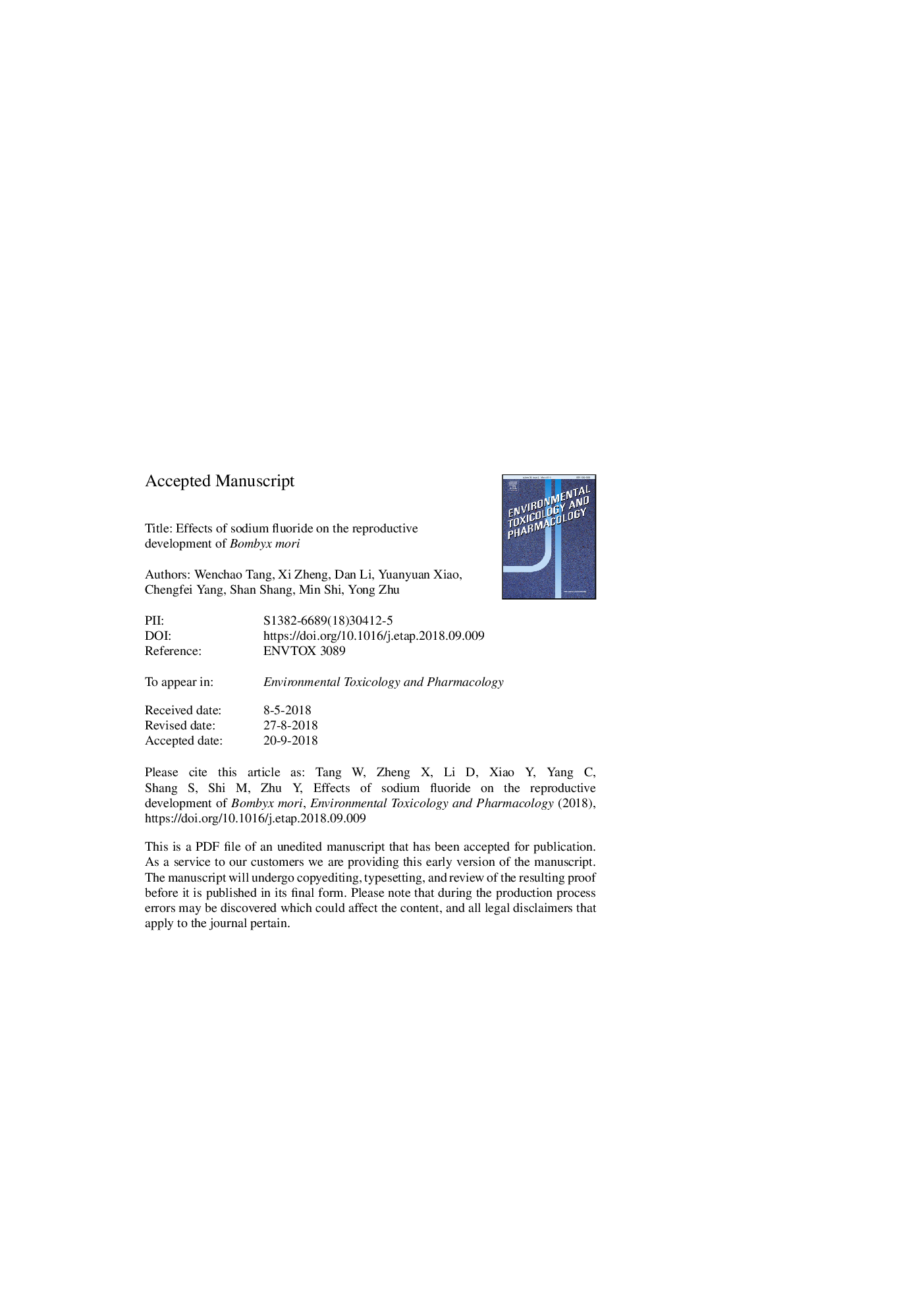| Article ID | Journal | Published Year | Pages | File Type |
|---|---|---|---|---|
| 11023030 | Environmental Toxicology and Pharmacology | 2018 | 24 Pages |
Abstract
Bombyx mori was used as a model to evaluate the reproductive toxicity of NaF in insects. Significant reduction in cocoon quality, survival rate, fecundity, and hatchability were observed upon NaF treatment groups. Fluoride determination indicated that Fâ has a cumulative effect on the gonad of silkworm. High-performance liquid chromatography revealed that the testosterone content of males was decreased in NaF-treated groups, and enzyme-linked immunosorbent assay showed that the estradiol content was decreased in NaF-treated females. Ultrastructural observation of testicles of silkworm larvae revealed mitochondrial turgescence, endoplasmic reticulum destruction, the appearance of vacuoles and lysosomes, and apoptosis and necrosis of cells in NaF-treated groups. Altered tail length and tail DNA content in Comet assays further confirmed DNA damage in NaF-treated larvae. We demonstrated reproductive toxicity of fluoride toward silkworm at physiological and biochemical levels, and the results provide a theoretical basis for revealing the reproductive toxicity of fluoride in terrestrial insects.
Related Topics
Life Sciences
Environmental Science
Health, Toxicology and Mutagenesis
Authors
Wenchao Tang, Xi Zheng, Dan Li, Yuanyuan Xiao, Chengfei Yang, Shan Shang, Min Shi, Yong Zhu,
